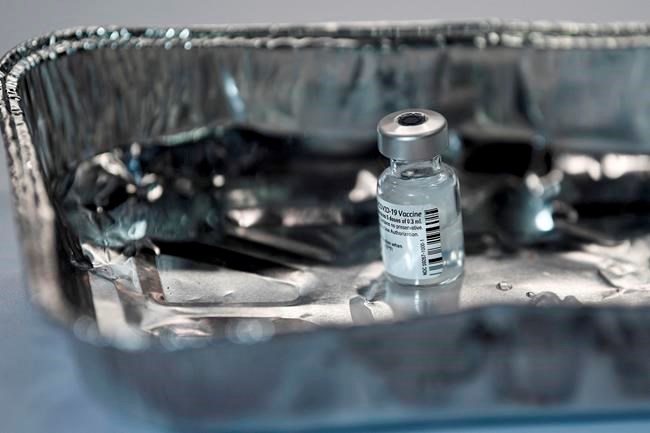
The Saskatchewan government is adjusting priority sequencing previously established for Phase 1 of its COVID-19 vaccine delivery plan.
Premier Scott Moe announced on Tuesday that, after a review of the plan, additional categories of health-care workers would be added.
“These include anyone that is directly involved in delivering COVID-19 immunizations in Phase 1 and throughout into Phase 2,” he said.
“This would include physicians, pharmacists and other Saskatchewan Health Authority health-care providers that are directly involved in delivering these immunizations — our immunization teams, if you will. Also included in Phase 1 will be anaesthetists and other operating room staff, home care providers.
“If there’s pharmacists or physicians that are choosing not to be part of the vaccination teams, we would ask that they not go get their vaccine in a priority basis. What we want to preserve these priority vaccinations for and these very scarce vaccine resources that we have are for people that are actually participating in the vaccination rollout.”
Saskatchewan’s chief medical health officer, Dr. Saqib Shahab, also spoke about the Phase 1 adjustment during a COVID-19 briefing on Tuesday.
“Health-care workers obviously are at risk of exposure but also at risk of transmitting to people who may be immune-suppressed or may also be at high risk … being sequenced at the same time, concurrently, with those at highest risk based on age,” he said.
“In addition to health care, we have a large number of people who have been working from day one (of the pandemic), in grocery stores, in law enforcement, in transport and trucking. And, obviously, we need to recognize the sacrifice. They have stepped forward when many of us were able to step back and work from home but the (vaccine) supply currently does not allow for them to be prioritized.
“As the vaccine supplies pick up over March, April, May, obviously, essential workers have played a tremendous role and as they are sequenced by age … but anything that we can do to prioritize them as they become eligible by age, I think, is going to be essential. They may be at low risk of transmitting to people at high risk, but certainly they have been on the front lines with the risk exposure.”
According to the government, the amended priority sequencing will add an estimated 11,500 people to Phase 1.
“We did say last week that we would be reviewing the about 16,000 health-care workers that were originally allocated to go into Phase 1 … this brings us up to about 26,000, 26,500, health-care workers that would be prioritized in Phase 1. That’s about 60 per cent of our health-care workforce,” Moe said.
“Our Phase 1 delivery will be up to about 400,000 doses to vaccinate about 200,000 people with the addition of the health-care workers here today. We’ve done about 50,000 (doses) so far, so just over 10 per cent and we’re expecting to get that up to about 80,000 by the end of February.
“By the end of March, we’re expecting about 190,000 doses so that will get us close to about halfway through our Phase 1 delivery and then ultimately be into April, where we are hoping to get into that 5,000-plus per day vaccines and that’s what we will hopefully get some clarity on from the prime minister later this week or whenever we talk next.”
Phase 2 of the vaccine delivery plan will focus on the general population in 10-year increments, starting with ages 60 to 69.
“Our mass vaccination program is still going to roll out primarily focused and primarily by age, starting with our elderly people first. We know that age is the number one risk factor for serious outcomes from COVID. So vaccinating by age is the best way for us to reduce those very serious negative outcomes,” Moe said.
“We look forward to ramping up our vaccination program as soon as the federal government increases the delivery of our vaccines, as they have stated they will. Until then, just please keep following all of the good practices that are keeping each of us safe and keeping those around us safe.”
According to the government on Tuesday, there were 136 new infections with the seven-day average of daily cases at 167. The province’s hospitals are currently providing care for 184 patients with the virus.































